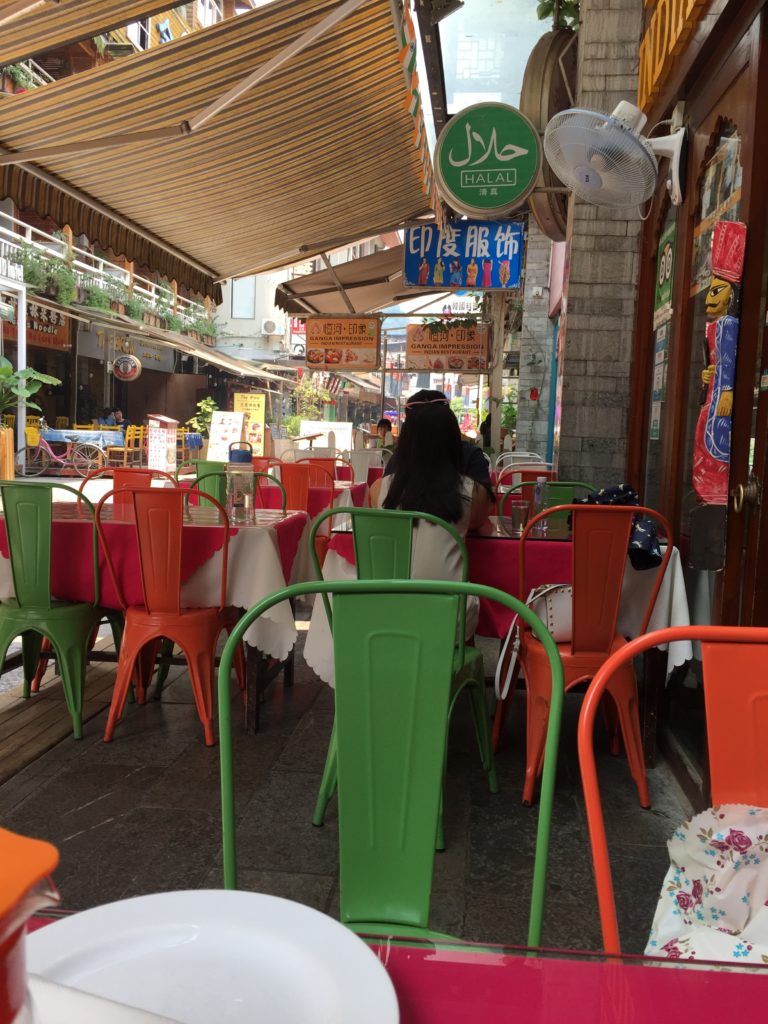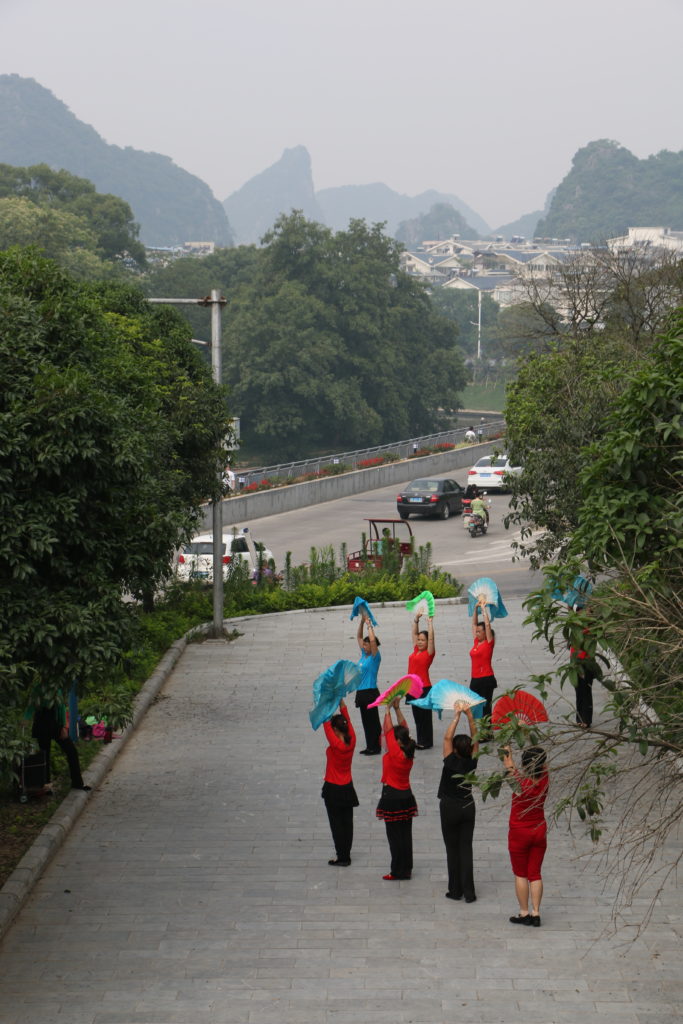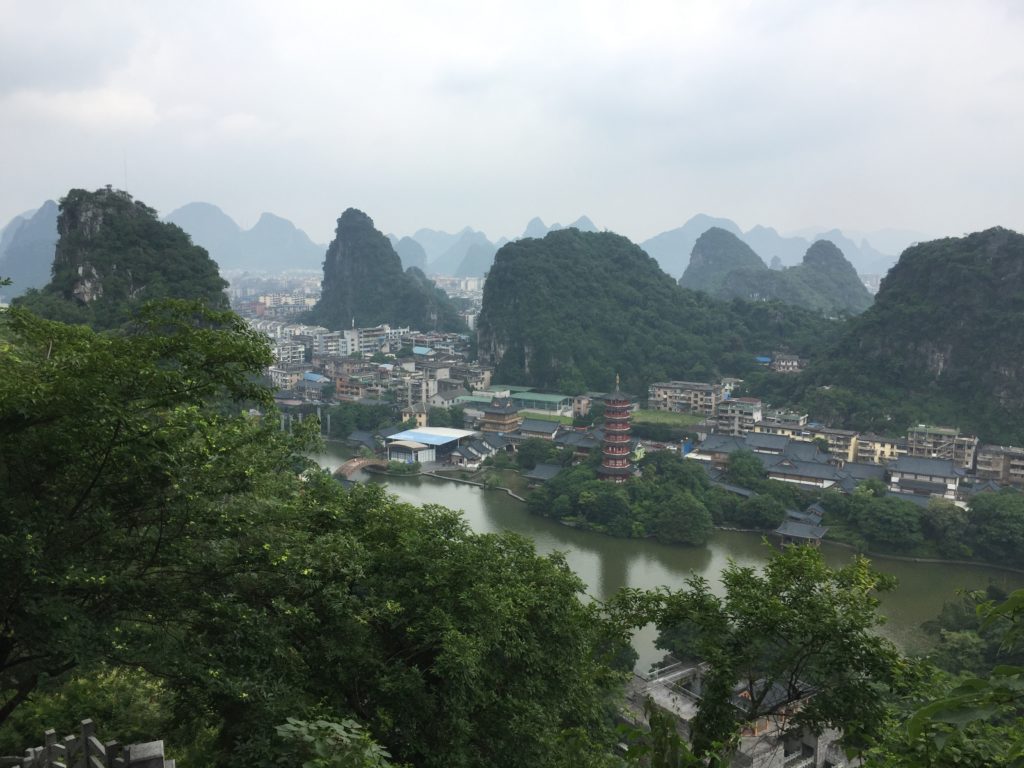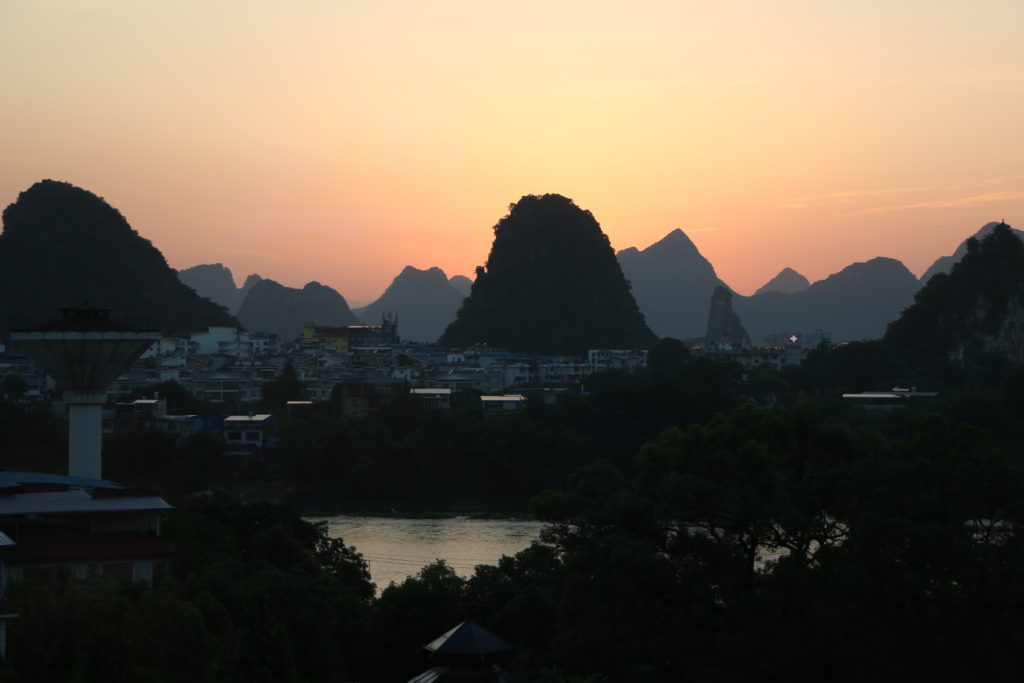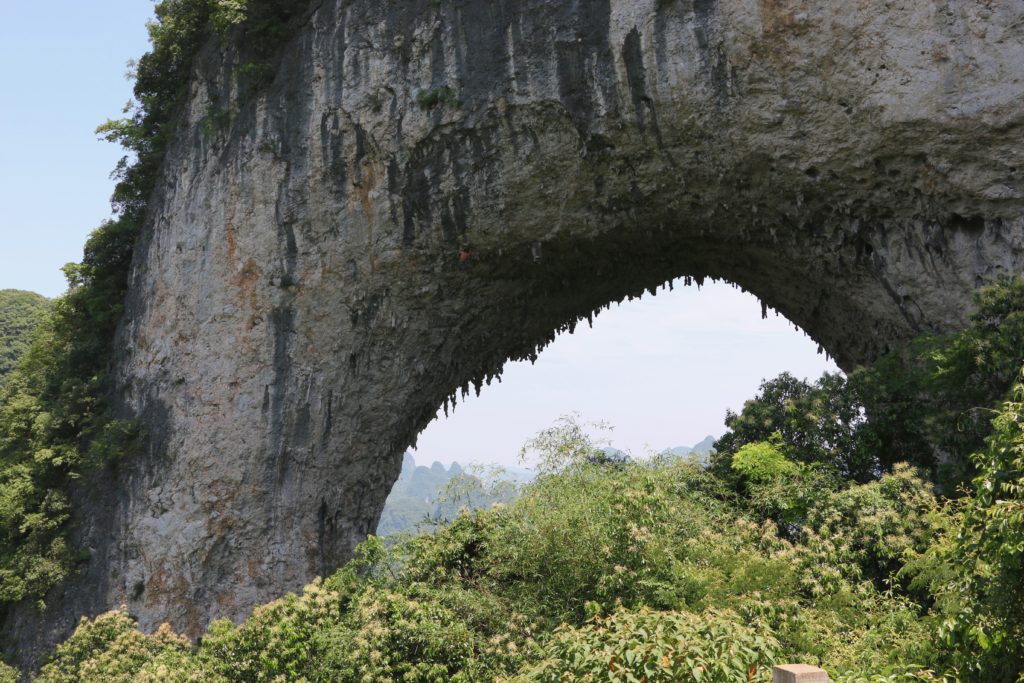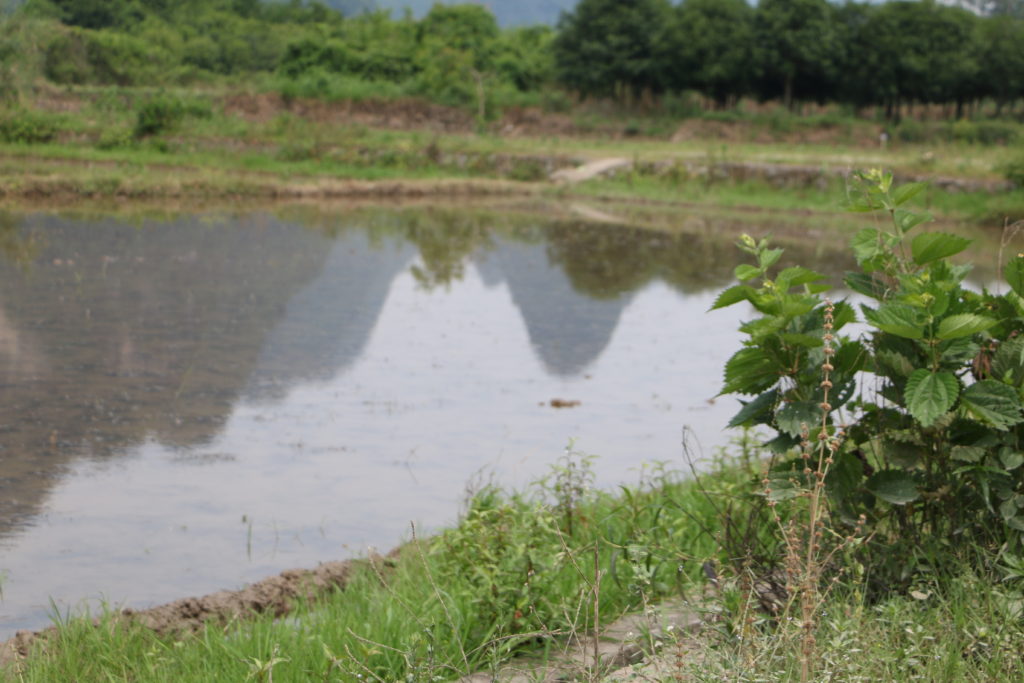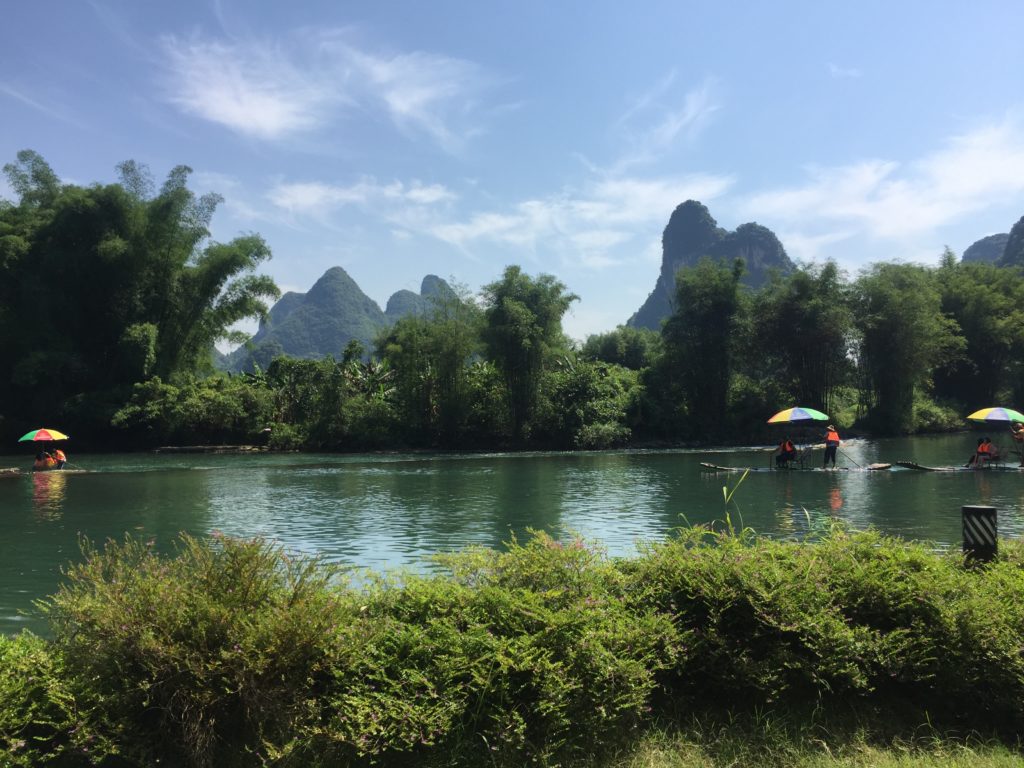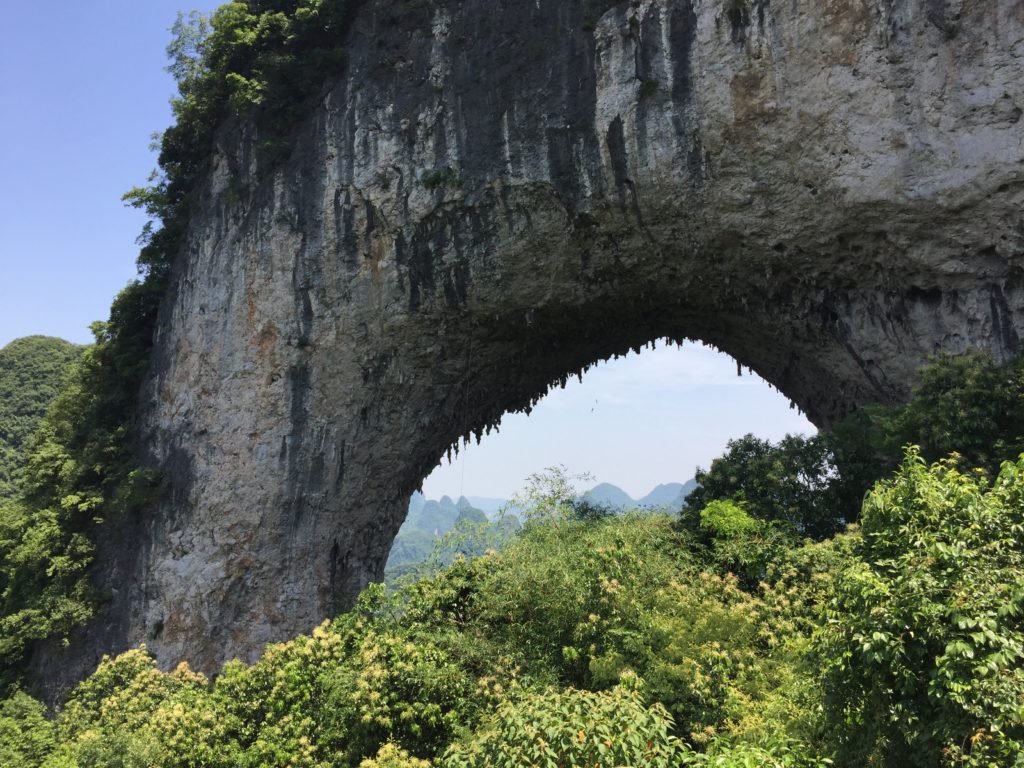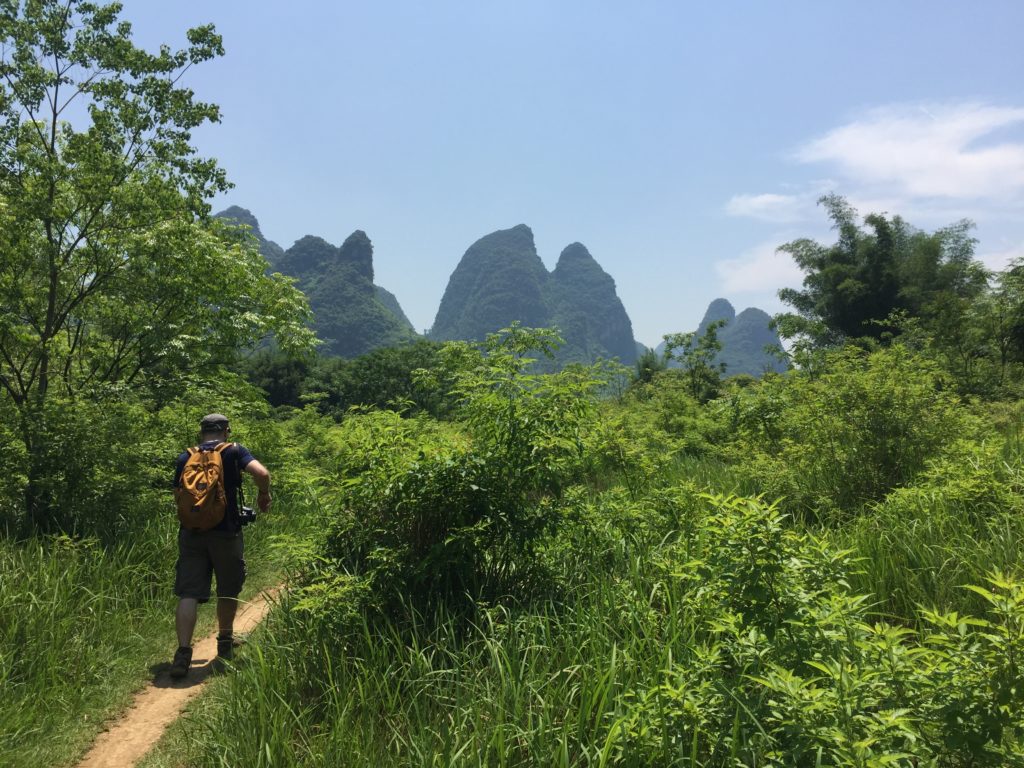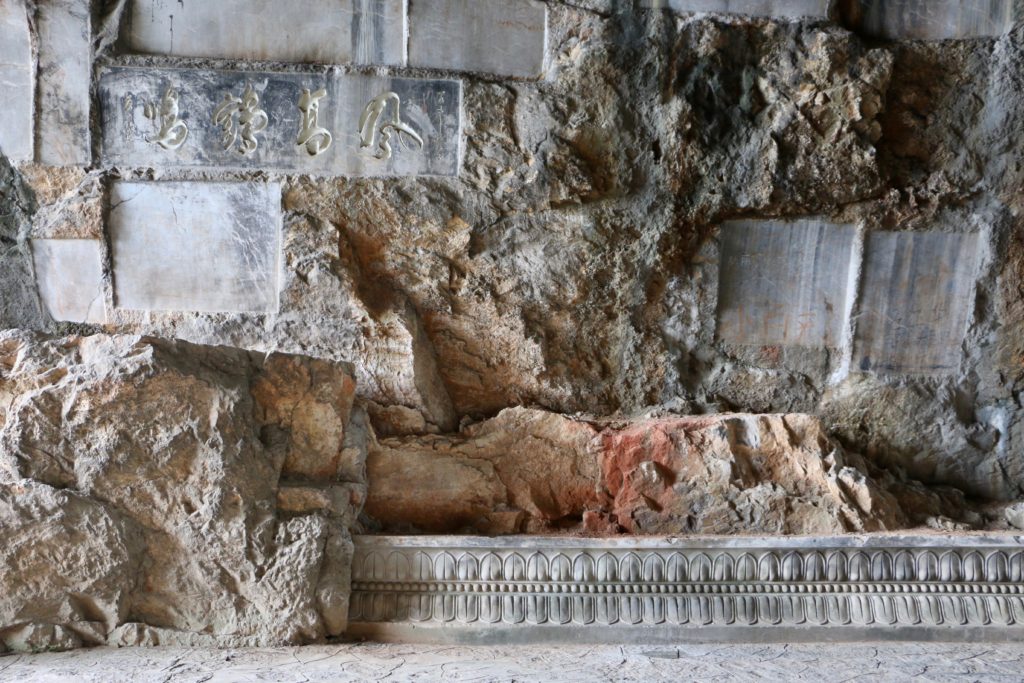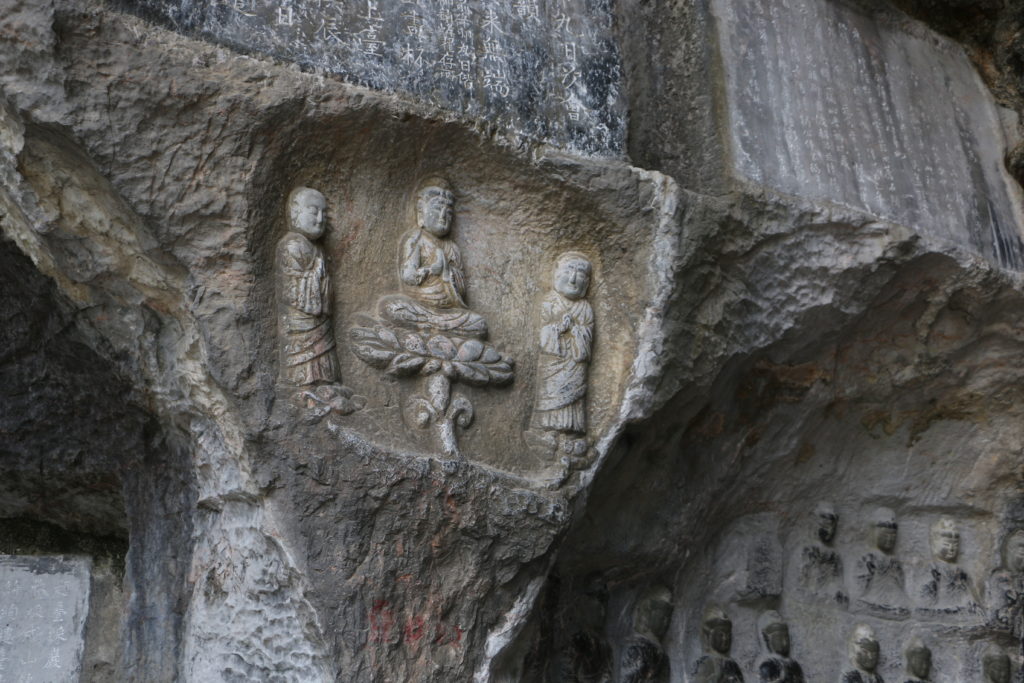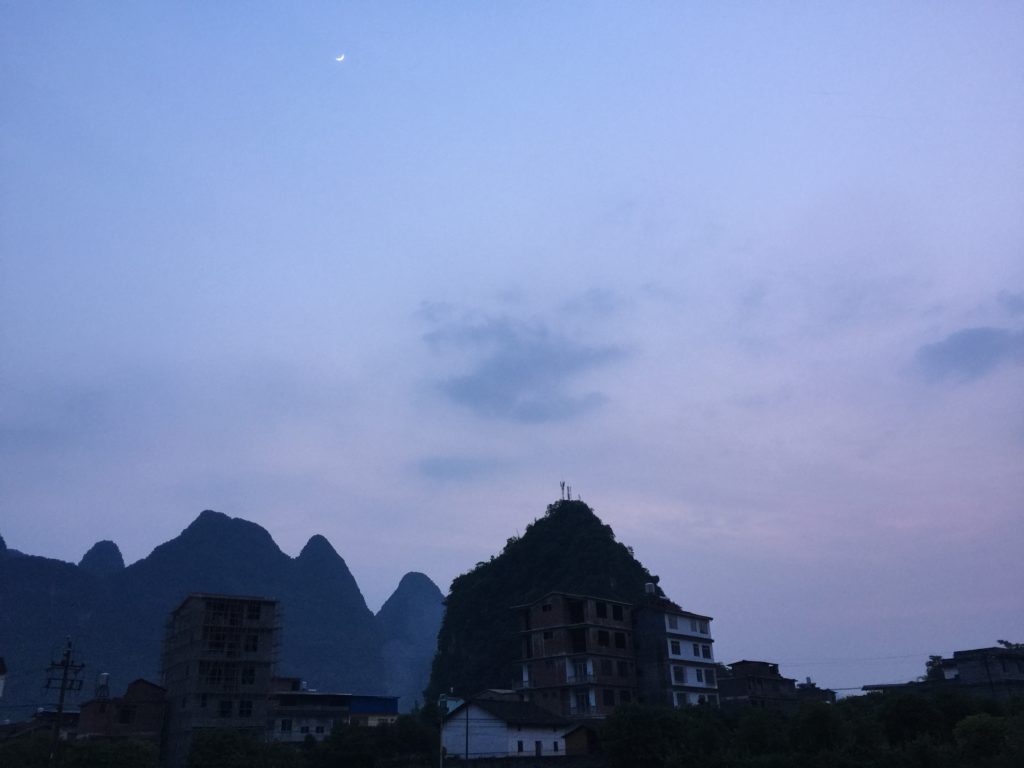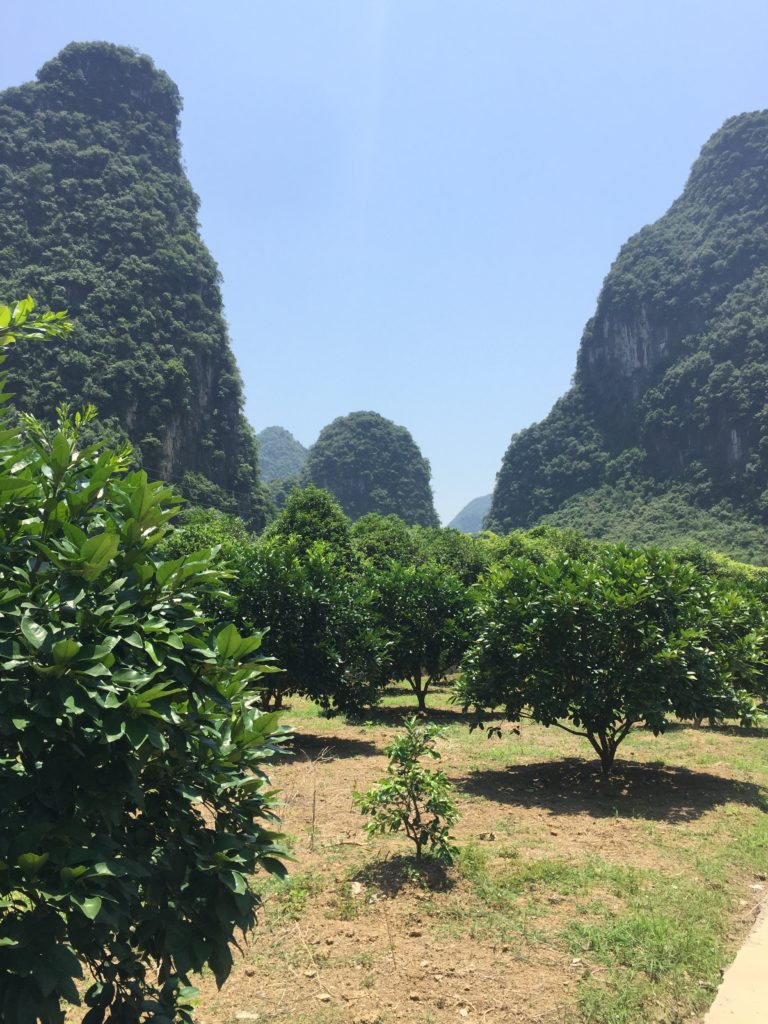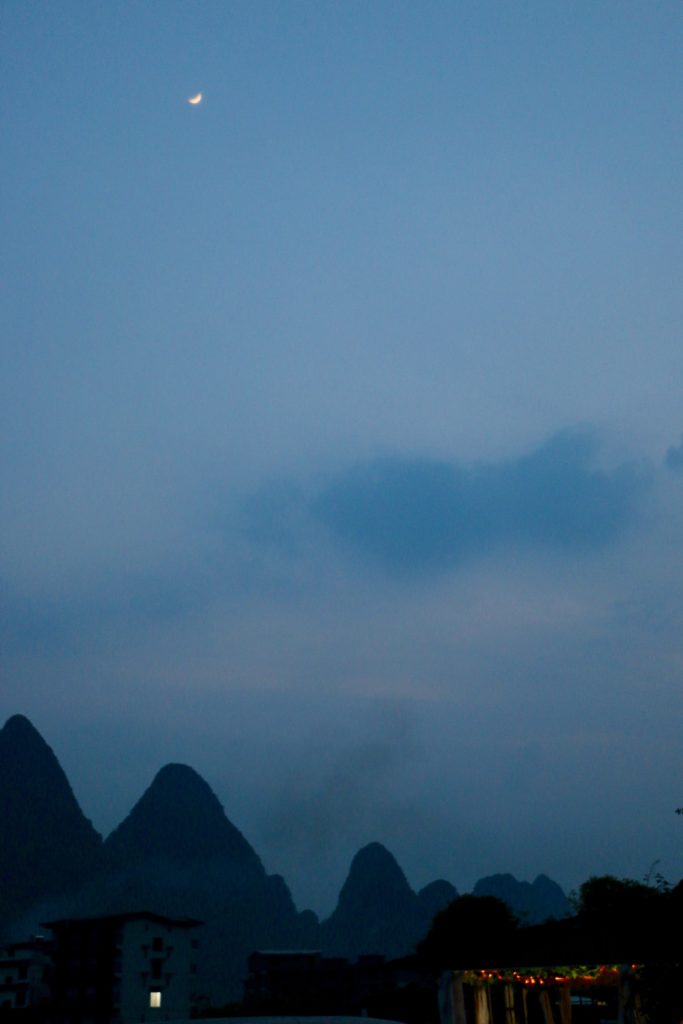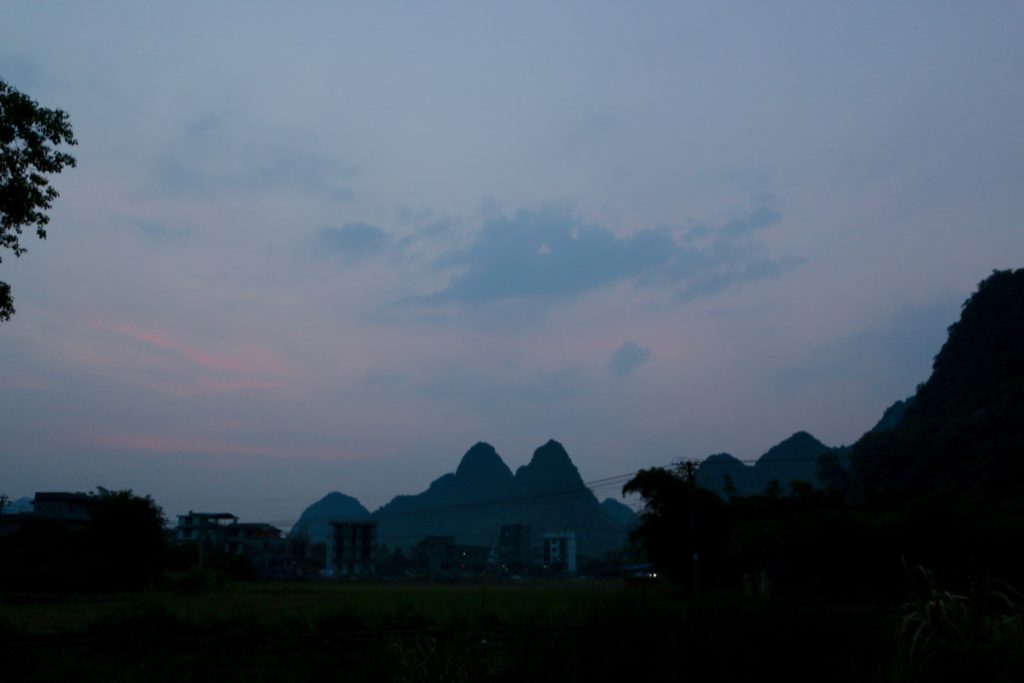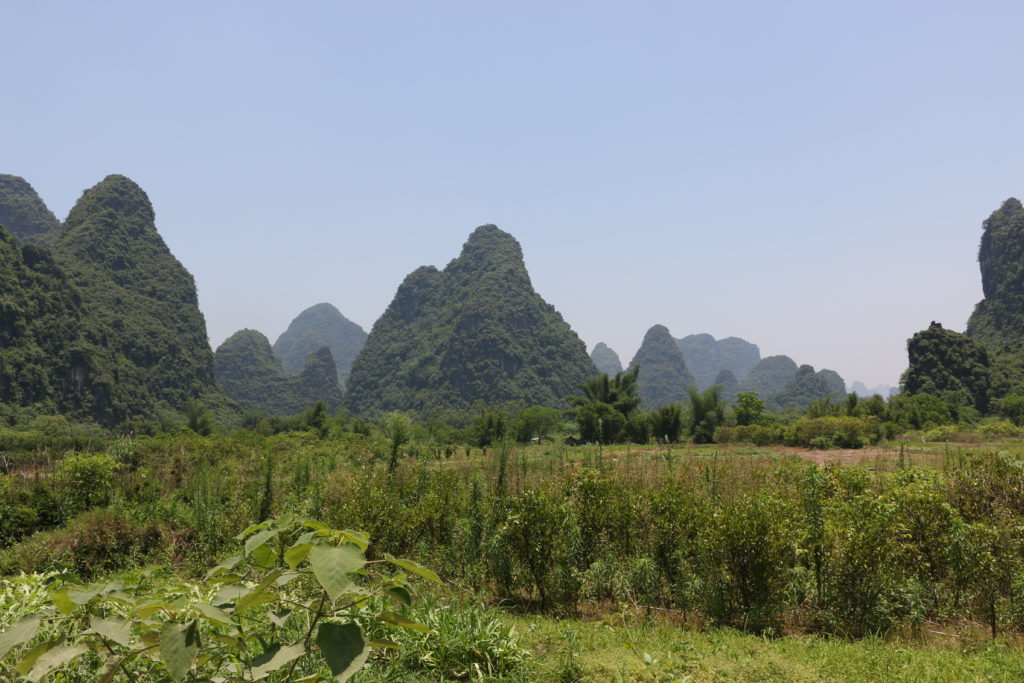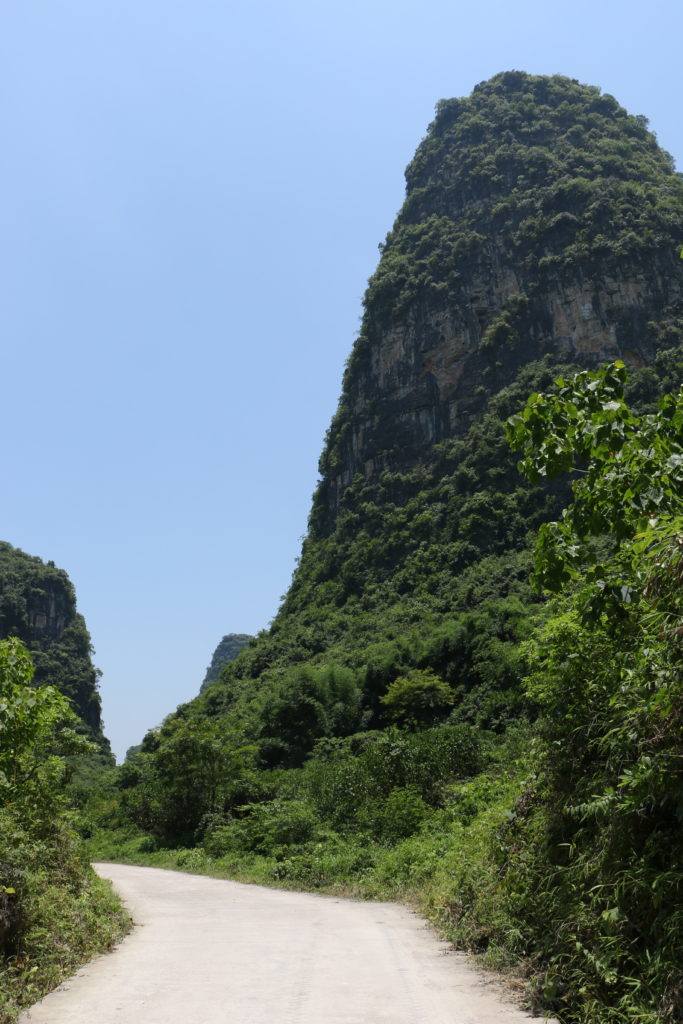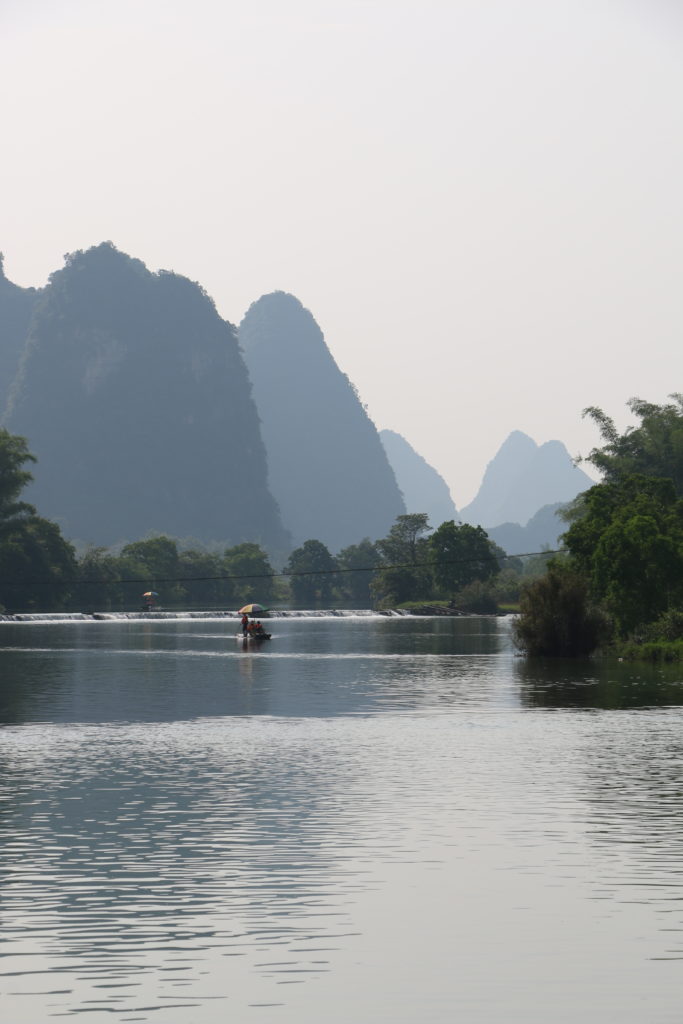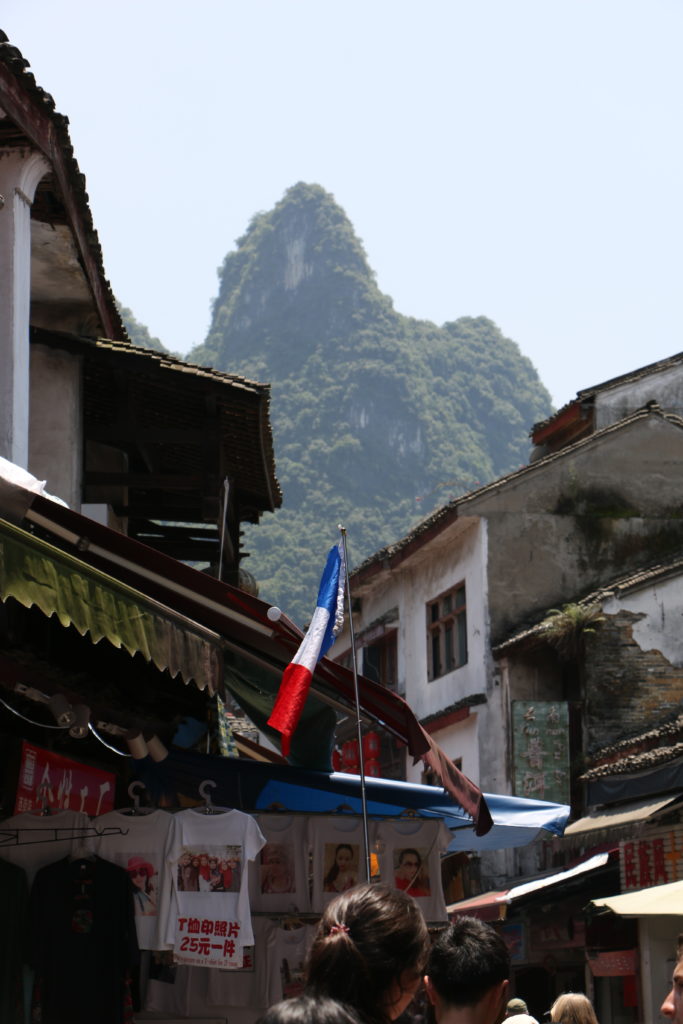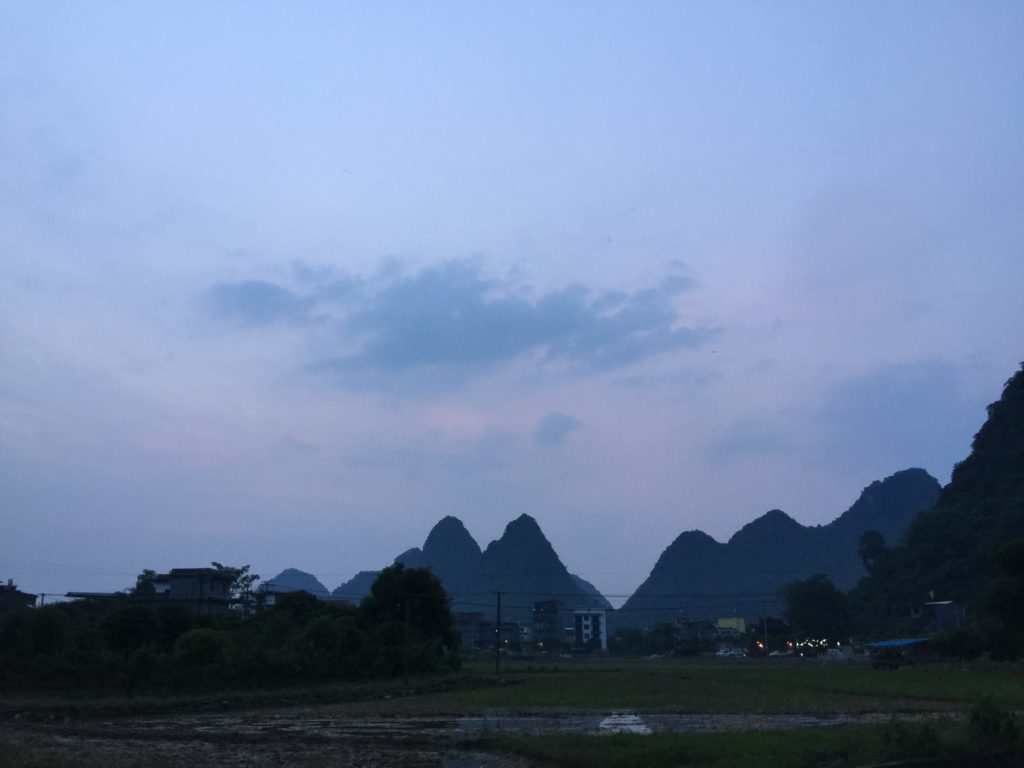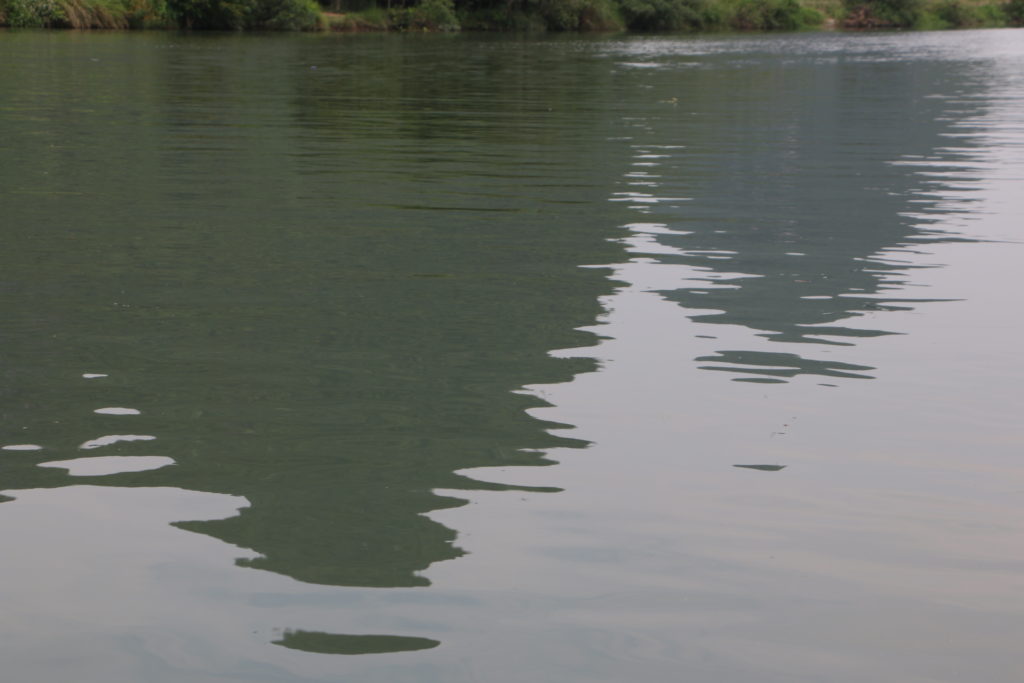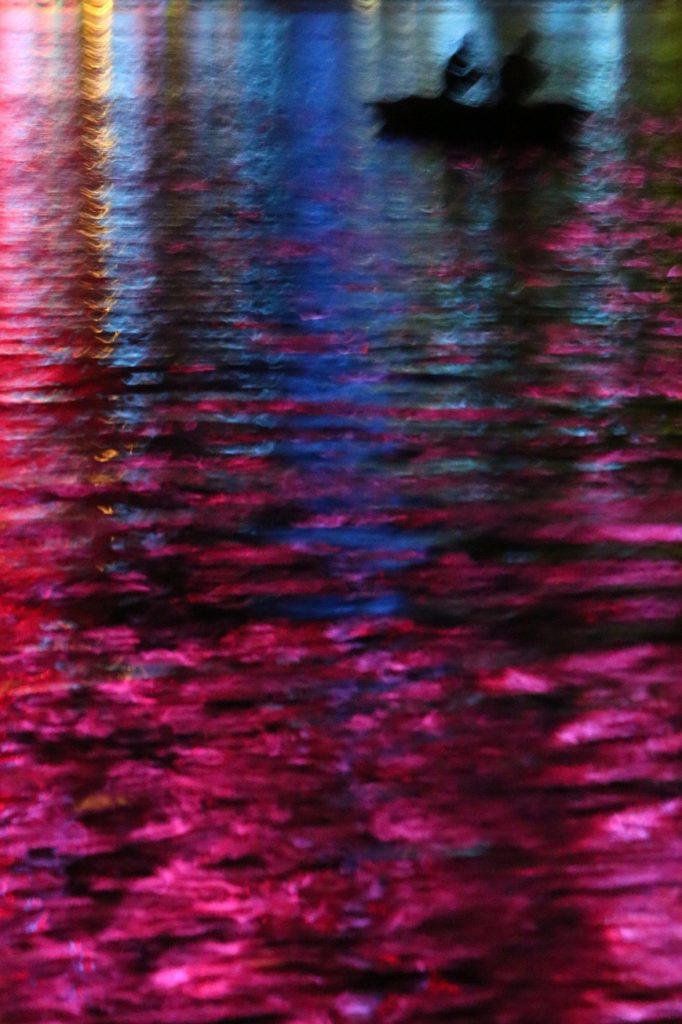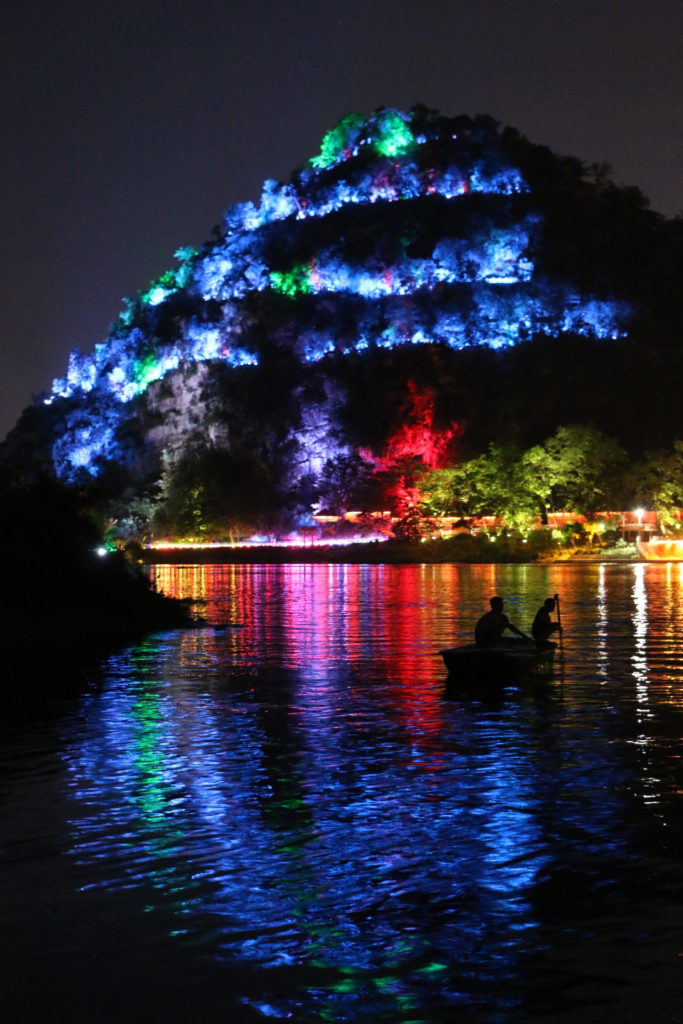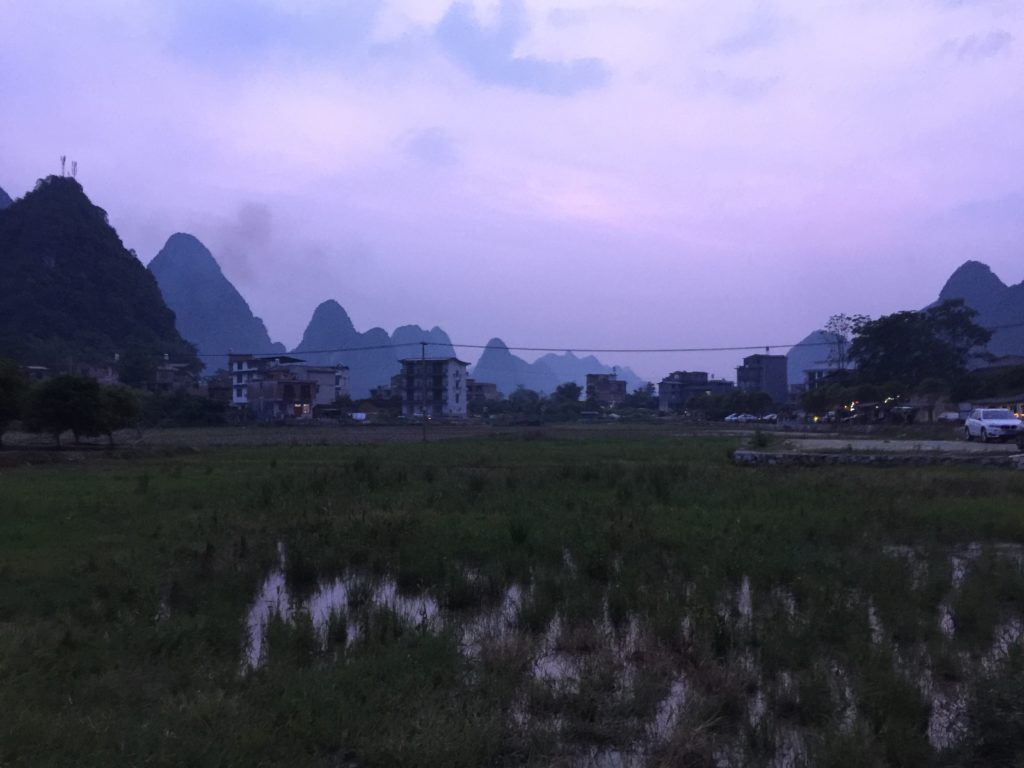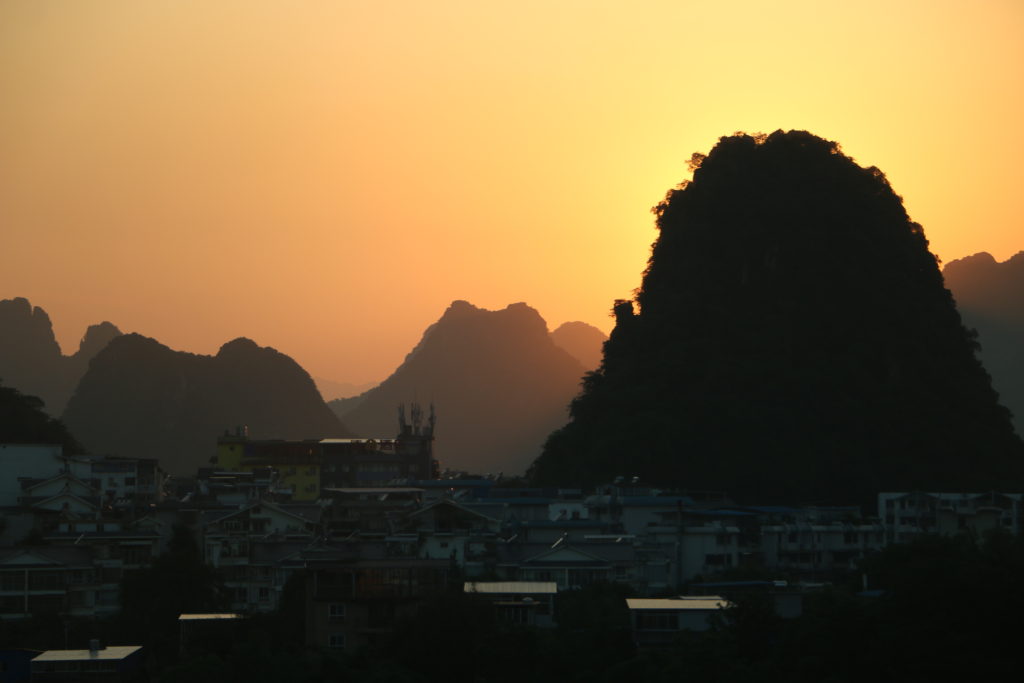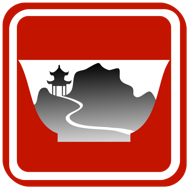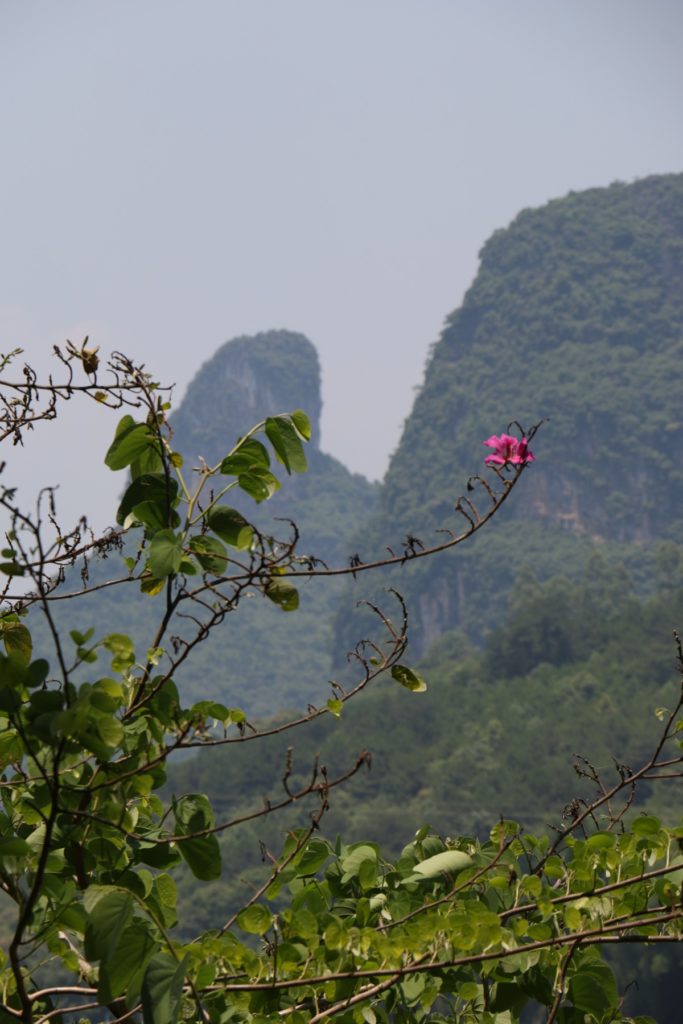
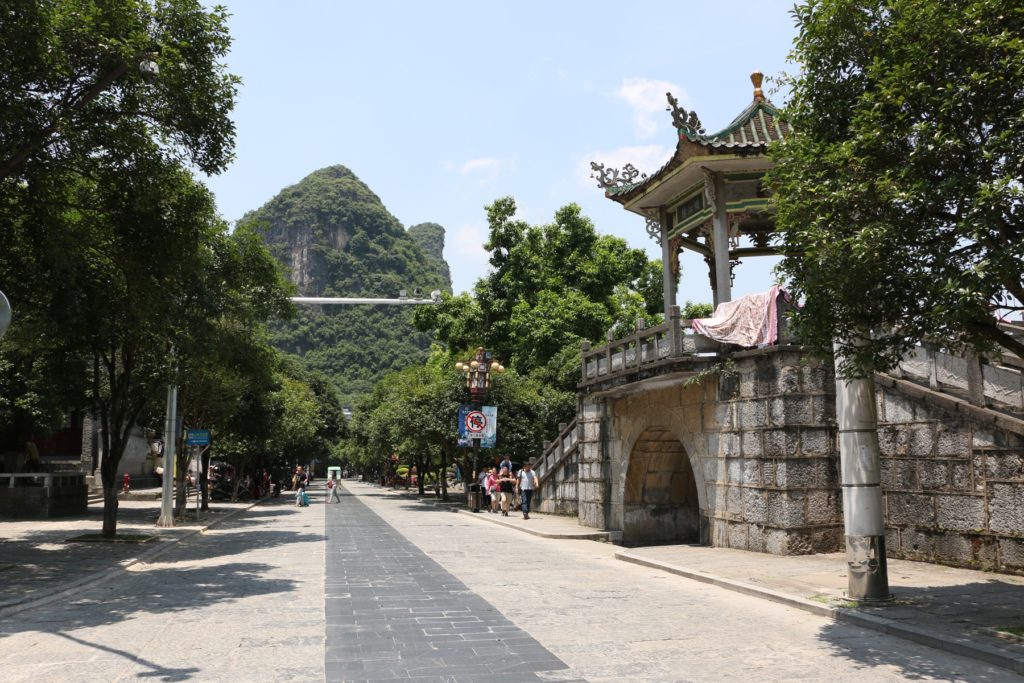
He walked up to peruse the sidewalk menu offerings, an American I guessed by the way he so casually started the conversation. Laoban, the older man said, to the young Indian man manning the restaurant, ni youmeiyou tandoori chicken? The “boss” laughed gently, tall, a little shy, wearing a soft linen shirt patterned with Chinese characters and some pastoral scenes, long hair in waves on the top of his head. Meitian wo mi lu, everyday I get lost, continued the American. He continued on down the street lined with German beer gardens and guesthouses, smiling in his lostness in the winding streets of Yangshuo.
We had spent four days getting lost in the hills of Yangshuo and Guilin, the two hometowns in China of rolling karst mountains, unique landscapes out of an ancient ink-and-wash scroll or some immortal’s daydream. These hills make for scenes you can’t find anywhere else in the world, not even elsewhere in China. The Chinese have a saying 桂林山水甲天下 – Guilin’s “shanshui” mountain-and-water scenes are the best in the world (which would get tagged by Chinese friends on every one of our social media posts about the region). Both Chinese and international travelers love these landscapes and visit in massive numbers every year. The region has built up a sophisticated system for moving tourists around in buses, trains, boats and rafts, and many lament the commercialism. This was one of the first places to be taken over by western backpackers in China, evidenced by the sandal-clad folks in German bars, the ukulele shops, and banana pancakes in all the guesthouses. But you can still find ancient brick villages and dirt paths winding amongst the green knobs of mountains where you can just be a lost man alone with your thoughts.
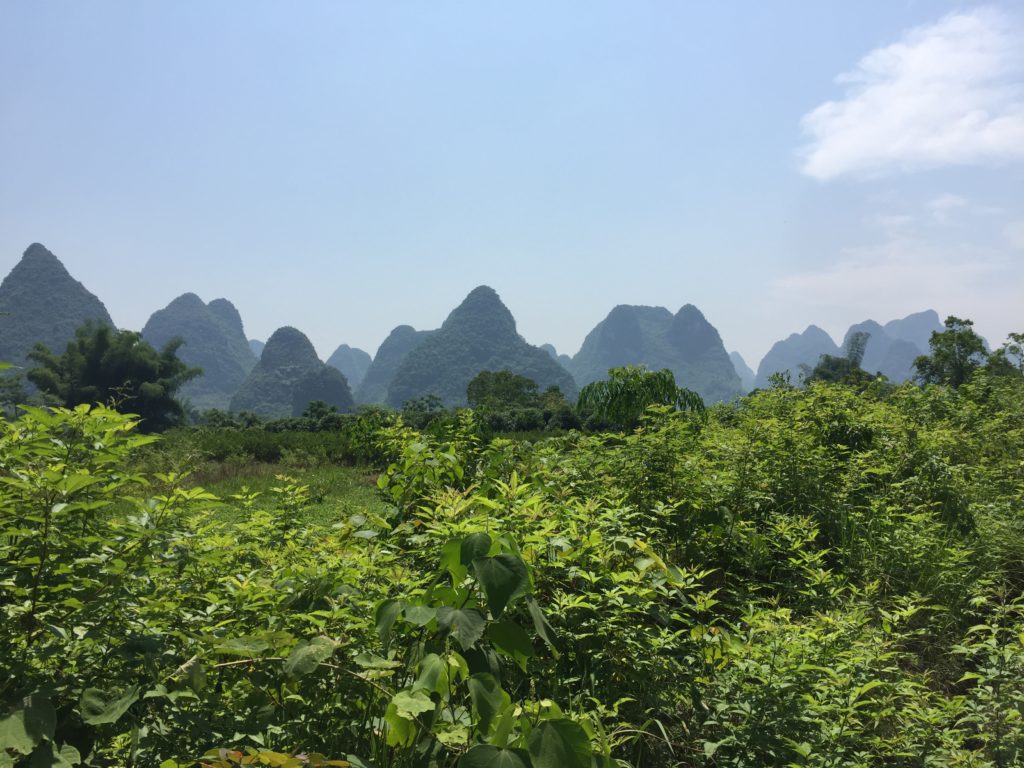
The first time you see the karst mountains of Yangshuo, it’s like nothing you have laid eyes on this planet before. How to describe them? An impossible shape of stone, sticking up out of the earth, vertical faces covered in vines and trees somehow rooted in rock, sometimes surmounted by a temple or pavilion perched on top. An even more impossibly, the horizon is a tangle of countless more of the same impossible mounds, extending in every direction. Soft peaks of meringue, dollops of whipped cream, a rumpled, hand-wrung hat, a falling-over windmill if you look at it long enough or crooked enough. And if you climb to one of the pavilions on top for a view, the hills spread out around you like a sea of clouds, stone clouds, frozen in place, and you are standing atop one as well, a calcium cumulus beneath your feet. Off into the distance a string of hills lies beyond another and another, an abstraction in shades of blue, just a wash of color giving the impression of distance and form, brushed by some unseen painter. Walking amongst them you are in a land before time, lush green not only covering the earth but rising up in canyon walls to your left and right. And day after day and evening after evening spent looking on these forms in the distance, the hills before you and behind you, reflected in windows and the water of the flowing river and the still rice paddy, inverting and warping their slumping shape. And even as you close your eyes in the afternoon sun, they make their mark in your mind’s eye, so that you cannot think of the land as simply a flat horizon any more but a sinuous curve in a constantly changing hue, from green and blue noon to peachy dusk to inky twilight. To be lost in Yangshuo’s shapes and colors is a happy reverie indeed.
